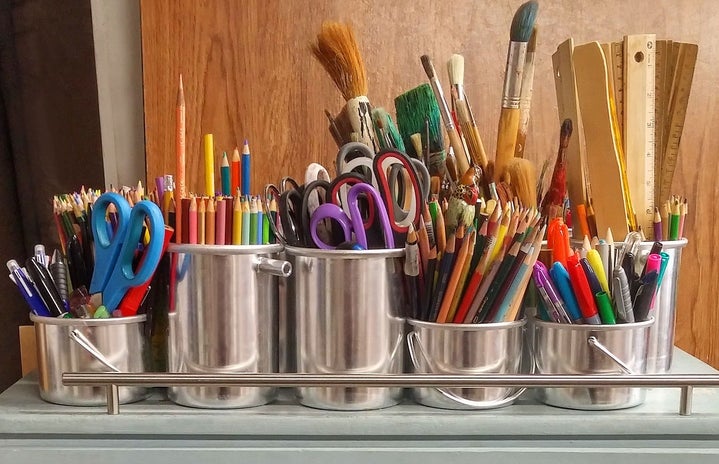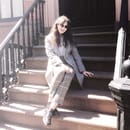Yoko Ono, globally recognised as a media artist, peace activist, and of course, the widow of John Lennon. At a glance, the northern city of Leeds may seem like a million miles away from The Big Apple where Yoko Ono has lived and worked since immigrating from Tokyo in the early 1960s, but it is the city where she has chosen to hold her latest exhibition, fittingly named, ‘Yoko Ono at Leeds’. The Manhattan-based icon may have made peace movements across the planet, but it is surprisingly not the first time she graced the city of Leeds, as she once performed in Vernon Street in the swinging year of 1966. So, this may be stretching it just a little bit, but this exhibition is not a phenomenon, it is a homecoming.
It was in my early teenage years that I first time I became aware of Yoko Ono. I saw her silhouette in a photograph, printed on the front of a tee shirt in Zara. I didn’t know who she was, but I wanted to know, and I memorised the caption ‘Yoko’ until I could research this striking individual. I knew instantly from passing that black and white photo, printed across a basic white tee that this woman had a presence. She had an aura which I wanted to learn more about, and it is this same aura which is so perfectly captured in her exhibition. A feeling which you cannot entirely put into words, but it involves a sense of inclusiveness, peace, and the burning desire to be as cool as Yoko Ono.
Situated in Blenheim Walk Gallery, the latest golden structure to rise above the Leeds Arts University campus, it is almost certainly impossible to get lost finding your way to the exhibition. If you do, however, you will just stumble into the university coffee shop, and so it is therefore only right that you fill up on Americanos before heading into the wonderful world of Yoko. When you reach the entrance to the exhibition, whether you are high on coffee or not, it is impossible to know where to start. Drawn to the vivid writing on the walls, the crimson and navy graffiti seemed to have the most presence in the entire room, but truthfully, I have no doubt that every visitor will be drawn to something different. What captures you first in that room is entirely dependent on your own self-character.
What sets aside the Yoko Ono at Leeds’ from that of any other art show you may have visited in the past, is that this exhibition is interactive. You are not an individual who is standing parallel to a masterpiece in complete awe and fear of falling into the century-old canvas. Instead, you are a part of this masterpiece, not only for the time you are standing in that room but beyond, as you are encouraged to leave a permanent mark on this spectacle. Yoko Ono allows the observer to become a participant, whose mark remains, long after you leave the gallery. You do not need to be an acclaimed artist to have your work featured here, you just need the courage to pick up a paintbrush, and you need the words. As Yoko Ono, herself said, “I love all words. Words are powerful if you use them well”.
It is a rare and incredibly surreal opportunity to look into the minds of a stranger, one which nobody can surely pass, and one which is possible through Yoko Ono’s Wish Tree’s. The two holly tree’s which were raised right here in Yorkshire are, in many ways, the centerpieces of the gallery. Hanging from small tags and tied by a string to the tree are people’s wishes, hundreds of extraordinarily candid revelations from people who you can only identify through their handwriting. The Wish Tree’s gather the dreams of somebody who you most likely have never met, although, you could have passed them on the street and had no idea. Nor would they know, that the individual who just passed them on a gritty Leeds street knows their wishes and hopes for the world.
The third staple piece laying prominently in the gallery is a Refugee Boat. A statement which shifts the focus of the exhibition to highlight current affairs which we are all so familiar with and reminds us that Yoko Ono, is a prominent peace activist. Across the rubber, the paint continues, almost as overspill from the walls which are becoming more and more tattooed every day. Something, however, seemed different. It was the same messages, the same statements of peace which were spread across the walls but written across the refugee boat, it just was not the same. The ruby red paint seemed darker, the blues were even bluer, the craving for peace even stronger.
There is an almost melancholy feeling as you leave the gallery, one which leaves you pondering for some time throughout the rest of the day. On one side, exposing yourself to the deep need for change and fractures in our contemporary world is undeniably disheartening, but it is the other side which you should take away from the exhibition. It is the deep-rooted feeling of togetherness with a bunch of strangers who have stood in that same room before you, alongside you and in the future. It is the recognition that change needs to be done, but if people can come together to voice their aspirations for hope in just one city, just think how many people could come together across the entire world. Yoko Ono at Leeds is not an artistic showcase, it is a somewhere you leave a piece of yourself for the next person to learn from, and it is a reminder that we should all be a little more like Yoko Ono.



